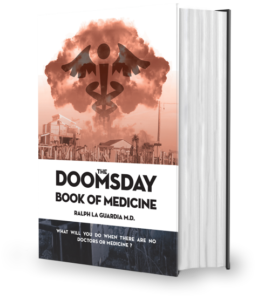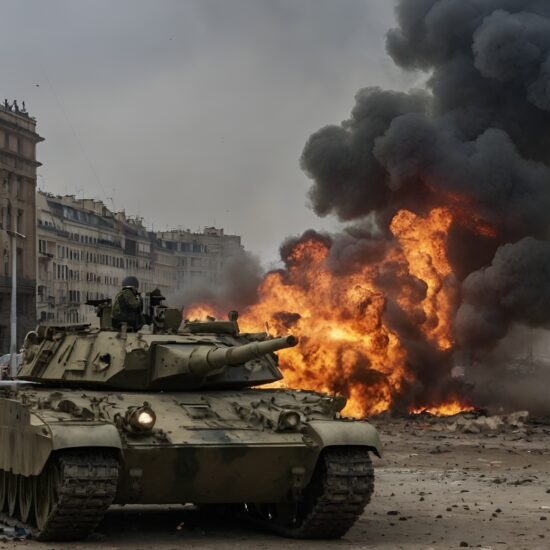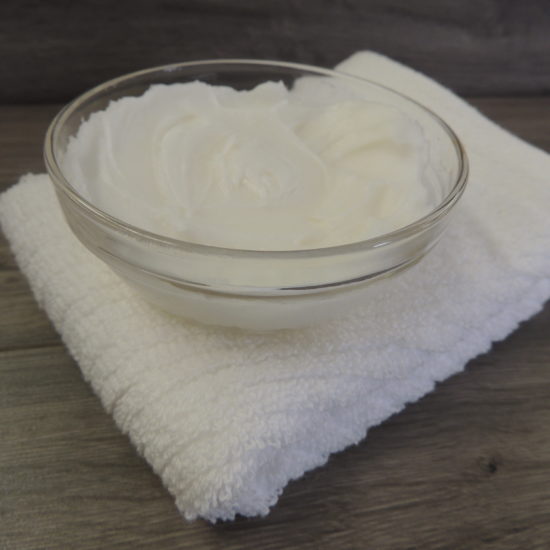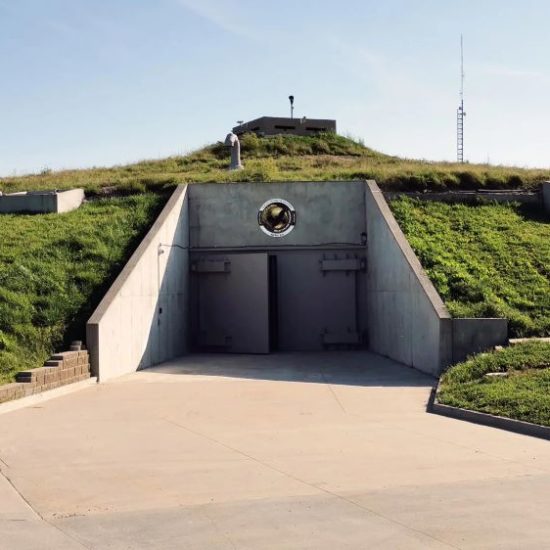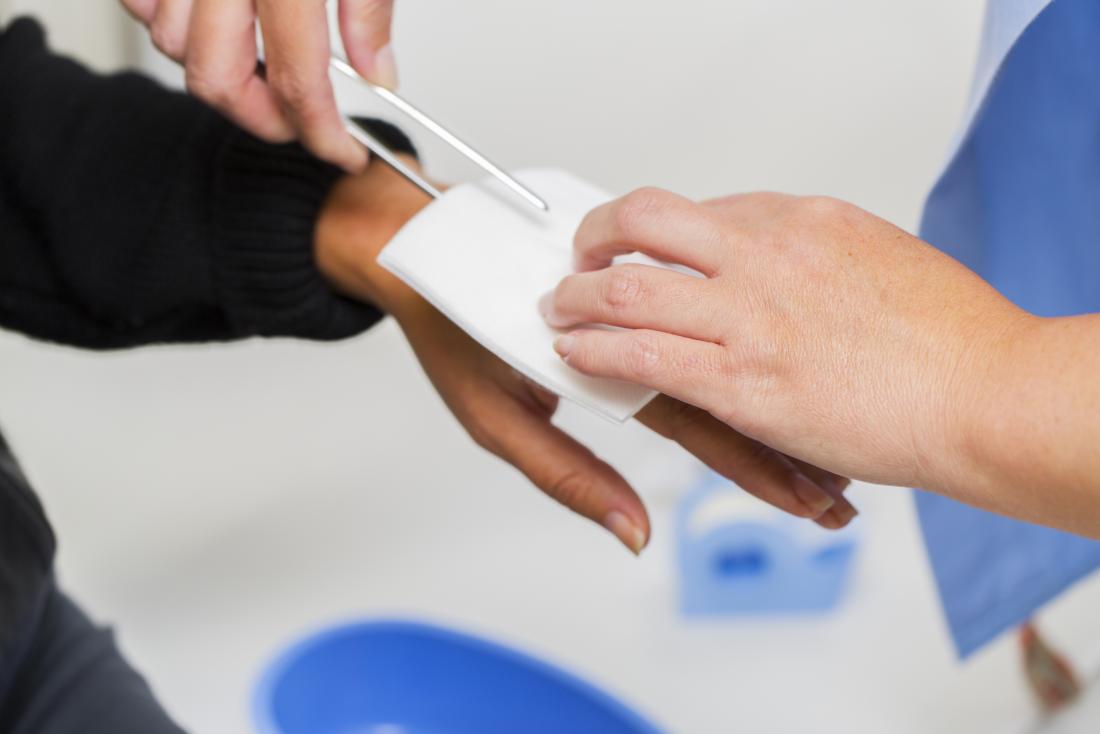
From simple sunburns to touching that hot item on the stove, or reaching into the over too quickly most of us have been burned to varying degrees. In their most minor form, burns seldom require much attention, the pain is brief and we go on with our lives.
Everything changes if we have a survival situation or disaster for two main reasons. First is that the likelihood you could receive a more serious burn is increased. If we have a total loss of power, you may be forced to cook over open flames. In most disasters, we have some element of fire that you may need to contend with. In a real grid-down scenario you could easily get scalded when you are trying to boil your water to make sure it is safe for consumption or any one of hundreds of different possibilities. There could be accidents dealing with using fuel such as gas to power your emergency generator.
The second factor is that access to medical attention might be slow or even impossible. When you can’t run to the Emergency Room or the neighborhood clinic, the responsibility for medical care may rest on your shoulders. Knowing how to recognize and treat burns is a medical skill that everyone in your family should have.
Burns and Treatments based on their severity
1st-degree burn
A first-degree burn is the least serious of the type of burns you can receive and it affects only the top layer of the skin, called epidermis. Signs of a first-degree burn include: redness of the skin, slight swelling, pain.
These burns can be treated at home and they heal in a week.
How to treat them:
- First, you need to run the burn under cool water for 10 minutes
- Then, pat the burn dry with a clean cloth or a paper towel
- At the end, cover the burn with a sterile (non-sticking) bandage
!!!DO NOT:
- Place ice on the burn because it reduces the circulation to the area
- Use fats or food products because this will only trap the heat inside the burn
- Apply cotton wool as it will stick to the wound and can cause an infection
2nd -degree burns
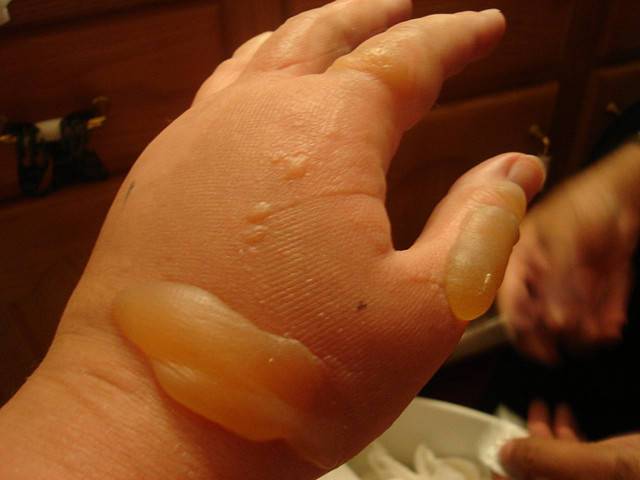
2nd-degree burn
A second-degree burn is more serious than the first as it affects both the top layer (epidermis) but also the second layer of the skin, called the dermis. They can range from mild to severe and can be treated at home or by a medical doctor depending on the severity of it. The 2nd-degree burns have an intense redness, develop blisters and there is a severe pain and swelling.
How to treat them:
- Apply the steps from the 1st-degree burns
- If the blister breaks, clean the area with warm water and a mild soap
- Also, protect the burned area from the sunlight because the burned skin is more sensitive to direct sunlight
- Take an over-the-counter pain reliever when needed
!!!DO NOT:
- All the don’t from 1st-degree burns
- Burst or pop the blister because this increases the risk of infection. (the blister forms as a protective mechanism for the burned skin)
3rd-degree burns
Are the most serious as they can damage both layers of the skin but also the tissue, hair follicles or sweat glands that can be found under the skin. These can appear white, black or brown, charred and there can be no pain as a result of the nerve being damaged. These wounds heal with severe scarring and contracture.
How to treat them:
- First, stop the burning process
- Never attempt to self-treat a third-degree burn
- Call 911
- While waiting for medical help
- raise the burnt area above heart level if possible
- apply a damp, cool, clean cloth to the burnt area
- lie flat, raise the feet, and keep the rest of the body warm to prevent shock
- extra fluids are needed to maintain blood pressure and prevent shock
People with third-degree burns need urgent medical attention!!!
!!!DO NOT:
- try to treat 3rd-degree burns by yourself
4th, 5th, and 6th-degree burns
These are very severe because the damages go deep into the body. They can reach fat, muscles, joints, and bones. People with these higher-level burns need immediate medical attention. An injury of this degree may result in the loss of the burnt body part.
Major Burns
How to treat them:
- Never attempt to self-treat a third-degree burn. Call 911 and wait for professional help!!!!
- First, stop the fire
- Remove the clothes. if they can’t be removed then make sure the victim is not in contact with smoldering material
- If the victim has stopped breathing or his/her airway is blocked, open the airway and perform rescue breathing and CPR as needed.
- Cover the burn area with a moist, cool sterile bandage or clean cloth. Be careful not to break burn blisters.
- Separate the victim’s fingers and toes with dry, sterile, non-adhesive bandages.
- Until medical help arrives, continue to monitor victims’ pulse, rate of breathing and blood pressure if possible.
!!!DO NOT:
- try to treat 3rd-degree burns by yourself
- do not put ice on the burn
- all the steps from 1st-degree burn also apply here
I hope you will never have to use this, but you never know so please read this more than once.
—————————————————————————————————————————————————
Other self-sufficiency and preparedness solutions recommended for you:
Healthy Soil + Healthy Plants = Healthy You
The vital self-sufficiency lessons our great grand-fathers left us
Knowledge to survive any medical crisis situation
Liberal’s hidden agenda: more than just your guns
Build yourself the only unlimited water source you’ll ever need
4 Important Forgotten Skills used by our Ancestors that can help you in any crisis
Secure your privacy in just 10 simple steps


